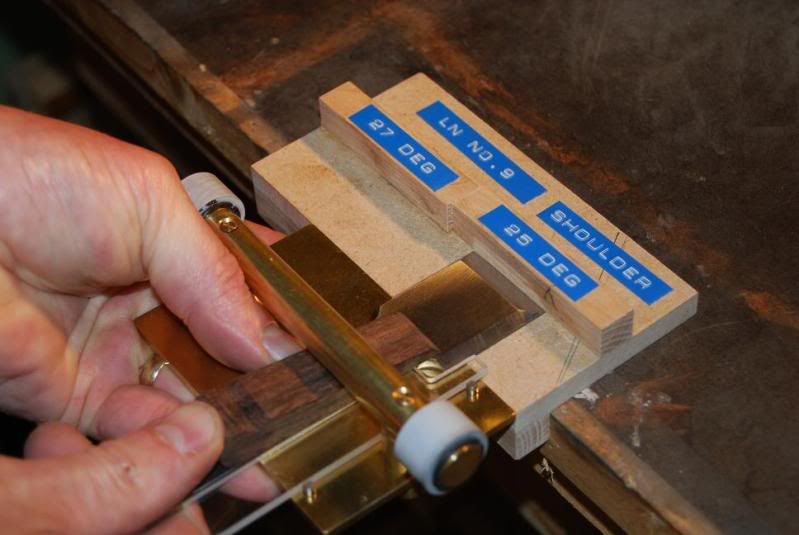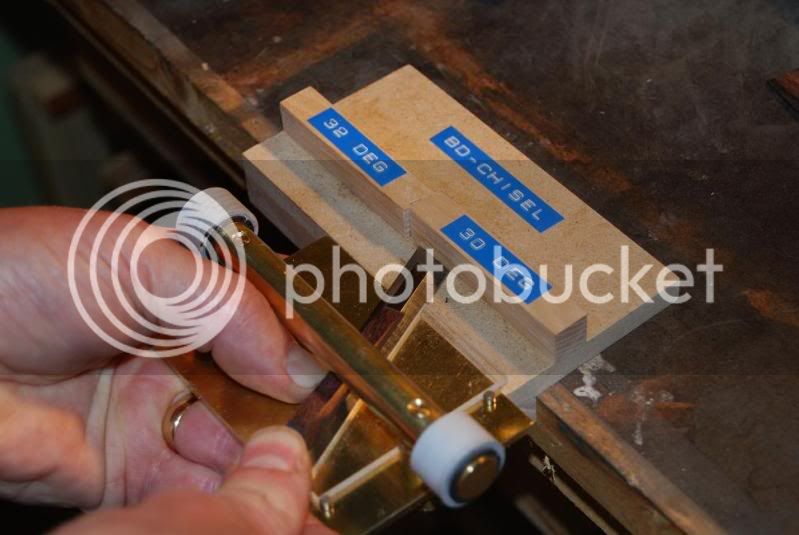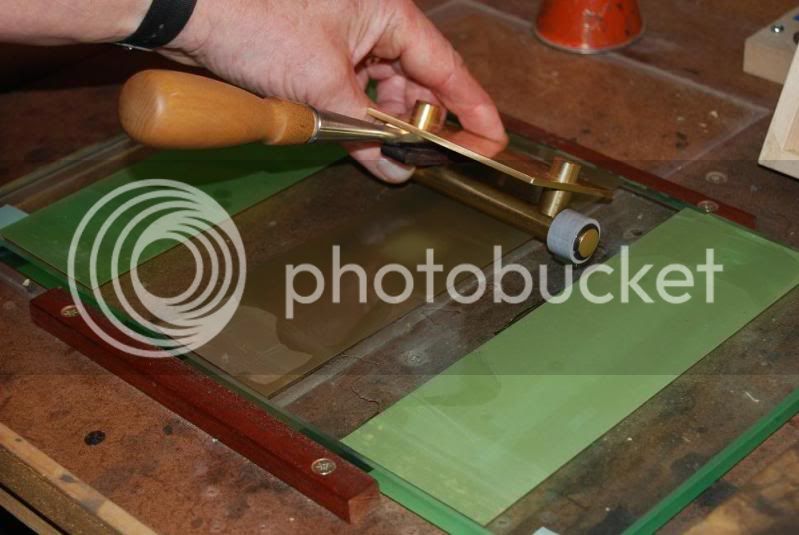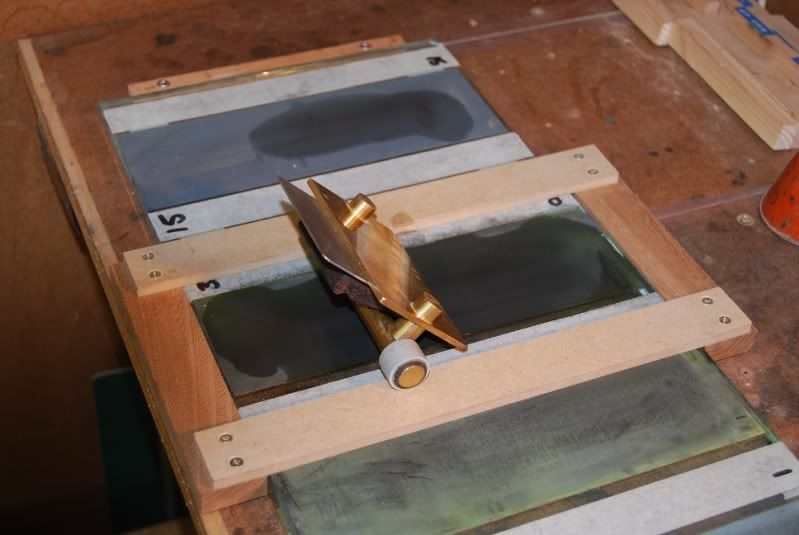I know that on here there are many who swear by this and others equally who differ but FWIW here are my views.
I ordered the guide recently which was delivered about 5 days ago - came with a set of "hand written" instructions(photocopy!!)
It looks very well done and exudes precision.
Heres the problem though - I still have not used it.
Normally with most buys I have a go immediately to cure the "itch" and have a fair idea of the validity of the purchase - but not this one.
Made a wedge for it 2 days later - somehow the thrill was off.
Today however I wanted to sharpen my LN 3mm chisel - hang on you got to make another special wedge :evil:
In fact if one wished to maintain the spirit of the invention (precision/horologist level etc) it is desirable to make a special wedge for different sized chisels.
If you wanted to sharpen a skew blade - you got it - another wedge type standoff.
It would also be a good idea to make some "standoffs" from the reference pins for small chisels - what to use here wood ?? acrylic is better ,how thick ? - check he web ,order stuff etc.
Lets have a look at the "hand written instructions" again ???
Let me check how it feels on the diamond stones says I - hang on , Forgot I had to make something to house them in so the guide wheels can run alongside.
How does one achieve the right angle ? you measure the overhang with a ruler or make another jig (for skew blades you will need another ofcourse)
Faff !
I realise now why I haven't sharpened anything so far.
I agree the Kell No 3 is an excellent example of precision metal working but the true cost of this guide must include not only the guide but the materials and time (sometimes frustration) required to source and create them to even start using the guide.
I admit it is an opportunity to help the user personalise his guide but to me it looks more like selling only half the kit .
The true cost factoring all of these would exceed £80-100 methinks - this for a subtle increase in accuracy of the edge - not worth it IMO especially when all you wanted to do in the first place was get on with cutting wood which is where the pleasure lies -for me anyway.
Sorry all - had to get that off my chest
I ordered the guide recently which was delivered about 5 days ago - came with a set of "hand written" instructions(photocopy!!)
It looks very well done and exudes precision.
Heres the problem though - I still have not used it.
Normally with most buys I have a go immediately to cure the "itch" and have a fair idea of the validity of the purchase - but not this one.
Made a wedge for it 2 days later - somehow the thrill was off.
Today however I wanted to sharpen my LN 3mm chisel - hang on you got to make another special wedge :evil:
In fact if one wished to maintain the spirit of the invention (precision/horologist level etc) it is desirable to make a special wedge for different sized chisels.
If you wanted to sharpen a skew blade - you got it - another wedge type standoff.
It would also be a good idea to make some "standoffs" from the reference pins for small chisels - what to use here wood ?? acrylic is better ,how thick ? - check he web ,order stuff etc.
Lets have a look at the "hand written instructions" again ???
Let me check how it feels on the diamond stones says I - hang on , Forgot I had to make something to house them in so the guide wheels can run alongside.
How does one achieve the right angle ? you measure the overhang with a ruler or make another jig (for skew blades you will need another ofcourse)
Faff !
I realise now why I haven't sharpened anything so far.
I agree the Kell No 3 is an excellent example of precision metal working but the true cost of this guide must include not only the guide but the materials and time (sometimes frustration) required to source and create them to even start using the guide.
I admit it is an opportunity to help the user personalise his guide but to me it looks more like selling only half the kit .
The true cost factoring all of these would exceed £80-100 methinks - this for a subtle increase in accuracy of the edge - not worth it IMO especially when all you wanted to do in the first place was get on with cutting wood which is where the pleasure lies -for me anyway.
Sorry all - had to get that off my chest







































